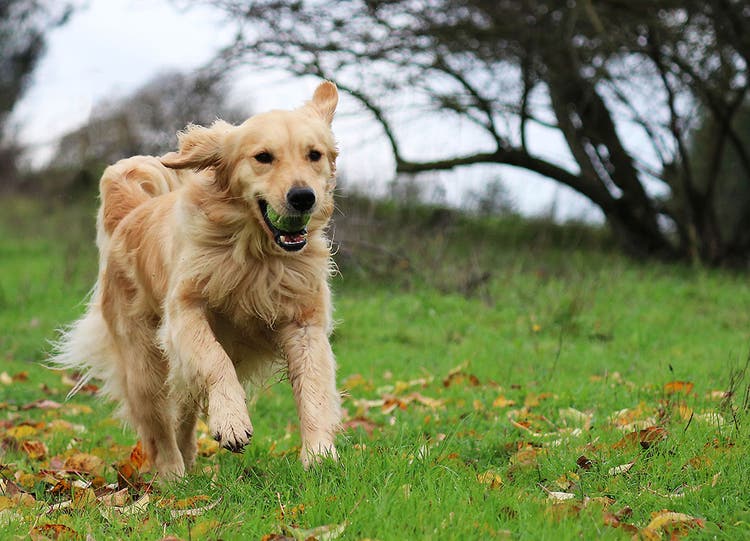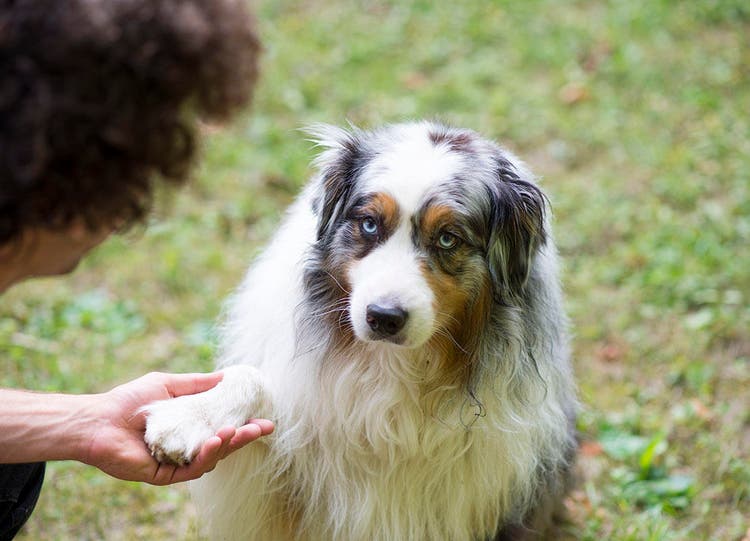Swimming is an important and valuable skill for dogs so they can stay safe while enjoying their time in the water. These tips from experts will help you with teaching a dog how to swim.
Can all dogs swim? Depending on the breed, some dogs may take to swimming like a fish to water, but others will find it much more challenging. Even if your dog isn’t a natural in the water, knowing the basics of swimming is essential to keep your dog safe this summer.
If you want to teach a dog to swim but don’t know where to start, these tips will help you and your dog enjoy a safe and happy experience in the water.
The benefits of swimming
Swimming is a great low-impact exercise, which can be highly beneficial if your dog has suffered an injury. If your dog doesn’t know how to swim properly, however, they may panic in the water and harm themselves or you if you try to help them. That’s why swimming lessons in a controlled environment will help your pet to be calm and confident in the water and it will also help improve their movement and flexibility. Swimming is an ideal form of exercise for dogs that are recovering from injury.
Swimming pools
While there are small doggie pools available, many Canadian homes now have their own backyard swimming pools. Pools can present a danger for a dog who is unable to swim. Even dogs who are excellent swimmers should always be closely monitored in a swimming pool. Pools can be difficult and slippery for dogs to climb out of and can easily be fallen into by accident. All pools should have a fence around them by law, which will also prevent your dog from falling in.
Being proactive and ensuring your furry friend can swim will help reduce the risk of a pool-related accident.
Top tip: Life Jacket
Your dog should first learn to swim in a controlled environment. Some cities may have hydrotherapy pools for dogs. If not, try to find a quiet pond or lake with a gradual incline where there are no currents or waves.
Many experts recommend putting a life vest on your dog first, to make sure their first experience is a positive one. Dogs that run into the water after a toy for the first time may suddenly realize they can’t touch the ground and panic. You don’t want your dog forever associating water with that negative experience. With a life vest on, however, your dog can float, giving them a minute to get their bearings then begin paddling with their legs.
Another reason to use a life vest is that some dogs who are new to swimming will only use their front legs and continue trying to find the bottom with their hind legs, making them lopsided. A life vest, however, will balance your dog out, making it easier for them to realize all four legs can work together to paddle.
When looking for a life vest for your dog, make sure it is durable, made of waterproof materials, adjustable (and fits your dog well) and is brightly coloured so it can be easily spotted in the water. Finally, all dog life vests should have a handle sturdy enough to pick the dog out of the water. All dogs, even the best swimmers, should wear a life jacket on a boat.
Be patient and continue to offer plenty of encouragement and rewards. It could take five or six sessions for your dog to feel truly comfortable in the water.
Top tip: Another Dog
Introduce your dog to the water slowly – let them do everything at their own pace. Never push or pull your dog into the water as this could traumatize them and have a lasting effect for life.
If you have a friend or neighbour whose dog is a strong swimmer, invite them over for a swim. Your dog may be more tempted to try swimming themselves if they see another dog enjoying the water. Make sure that you are also there to hold them afloat until they get the hang of it.
A Rewarding Adventure
Swimming can be great fun for your dog if they’re taught properly. While most dogs have the instinct to swim naturally, some have to learn how to swim to enjoy it as an activity. Once this has been achieved, you can use swimming as a recreational activity, exercise, rehab and sport for your dog.
Top tip: Get in the water with them
You can motivate your pup to swim by having a helper hold them at the water’s edge while you go into the water first. Ideally the shoreline should be very gradual. Once you wade out a short distance where your dog can still reach the ground, call your dog and show them food or a toy. Your helper can then let go of your dog or keep them on a long leash if necessary. Most pups will eventually run into the water to get to you.
As your pup grows more comfortable with the water you can gradually inch further into the water. The goal is to eventually make them have to do a few swimming strokes to get to you. Reward them with praise, a treat or a toy when they reach you. The more you practice this technique, the easier your dog will find it to enter the water each time.
Take it in small steps
Swimming is a healthy form of exercise for dogs, as it keeps them fit without putting a strain on their joints and bones, making it a great activity for older dogs in particular. Swimming regularly also helps dogs to maintain a healthy body weight through exercise.
Ideally, you should train your dog to swim as a young puppy, and always keep their safety in mind. Start by just getting their paws wet a few times before entering the water. Sessions should be kept very short, and always end on a positive note.
Top tip: watch the water temperature!
Pay attention to the water temperature! Canadian lakes can be frigid - even in the summer. Dogs and especially puppies can also quickly get hypothermia in a cold lake, a very serious condition that could be fatal. If your dog spends too much time in the water and is shivering, see a veterinarian immediately.
Dogs should be supervised around water, especially in the winter, and should never be allowed to swim if there is ice on water.
Guide and assist them
A wide variety of dog breeds suffer from joint and muscular problems, some of which tend to require surgery. Combined with the right veterinary care, swimming is a highly effective form of rehabilitation, which helps dogs to get back to their best. It can also ease the symptoms of common dog conditions such as arthritis and hip dysplasia.
In addition, swimming can have a positive impact on your dog’s level of fitness without the impact on their joints they would get from activities such as running.
Top tips
Not all dogs can swim as well as others, but every dog can eventually learn how with enough patience and the right training techniques. Once you teach your dog how to swim you can enjoy more quality time in the water together during hot Canadian summers.










